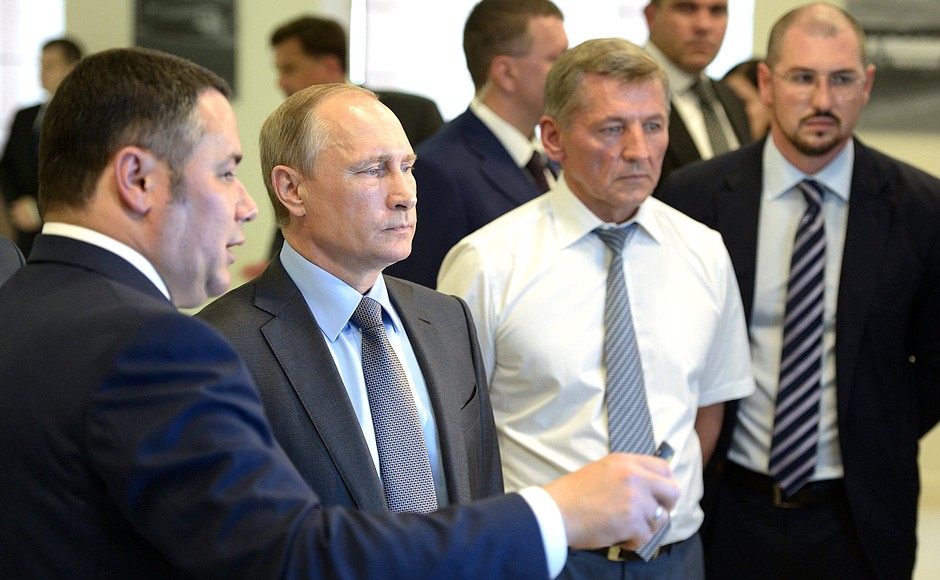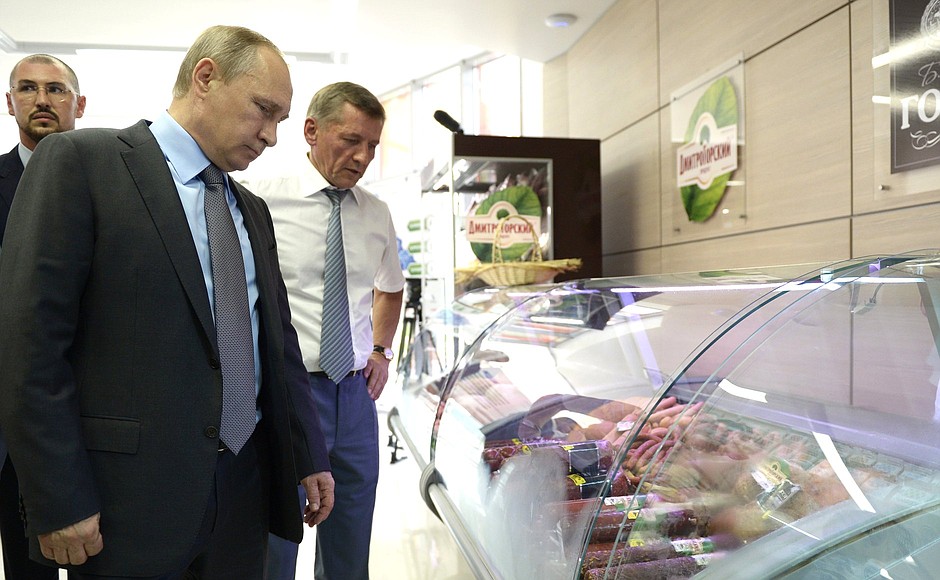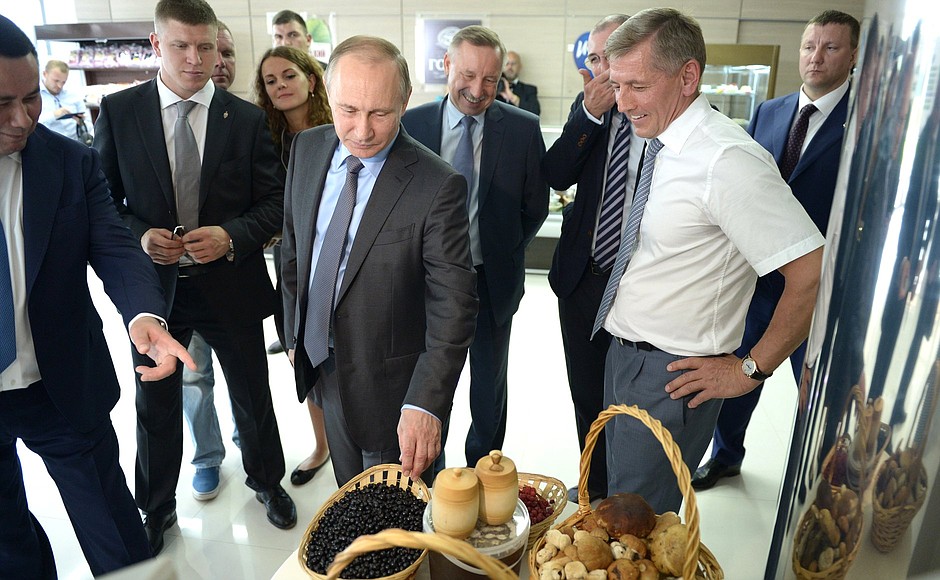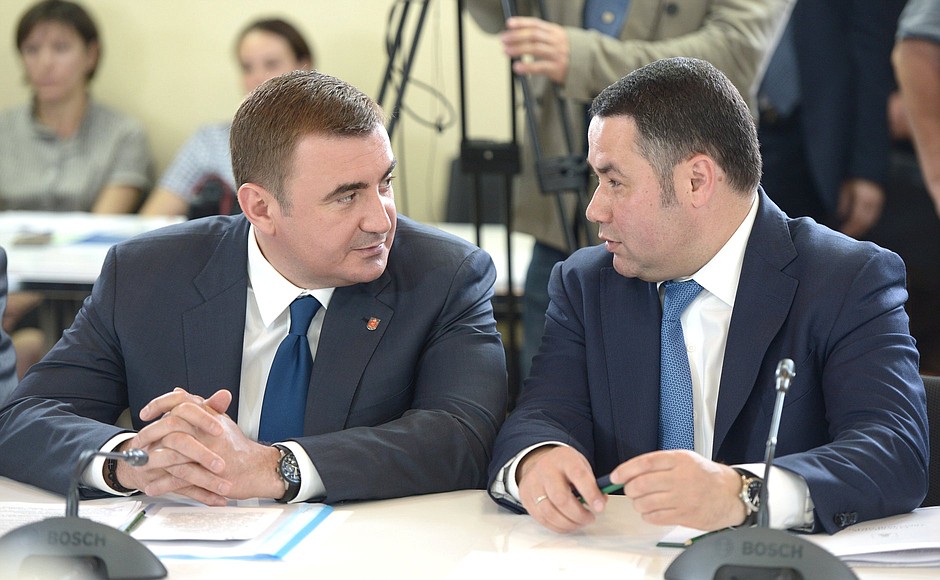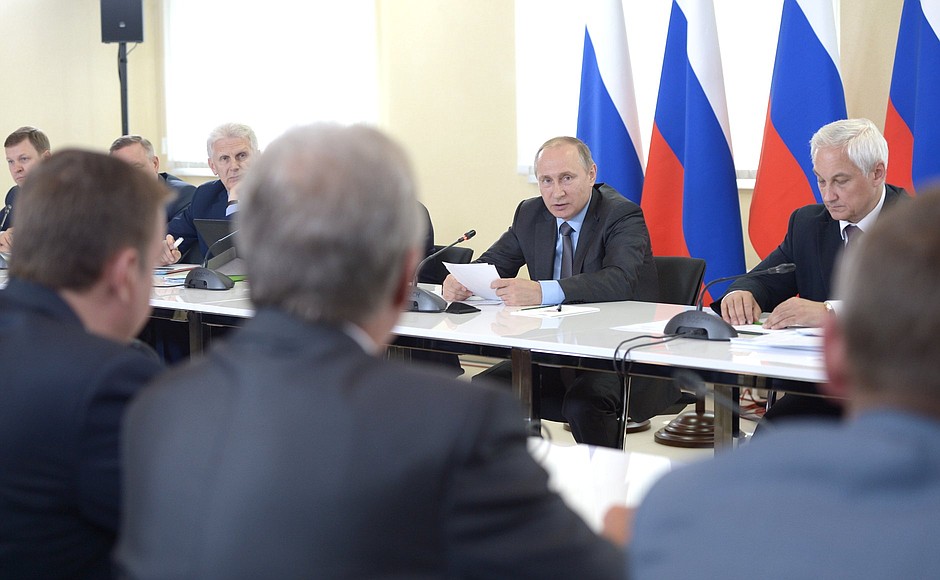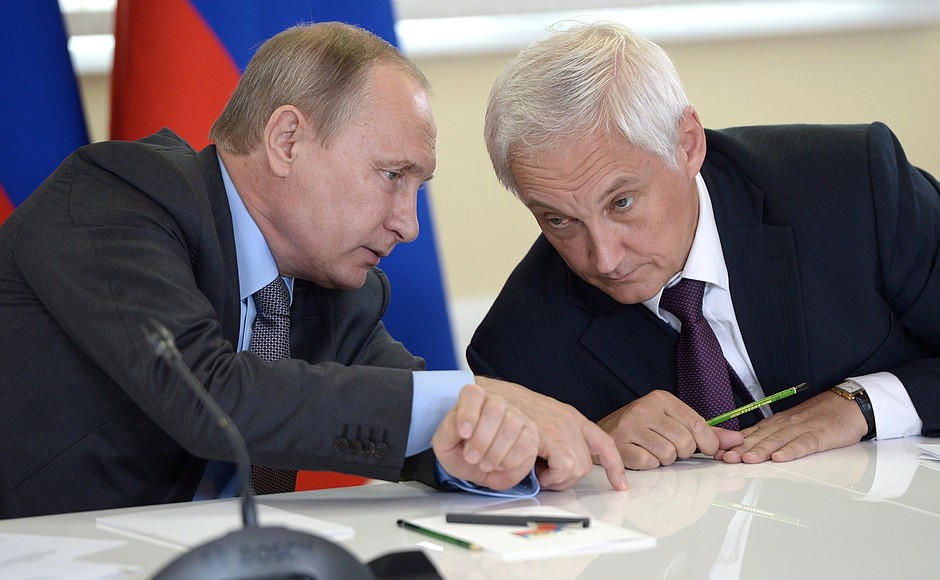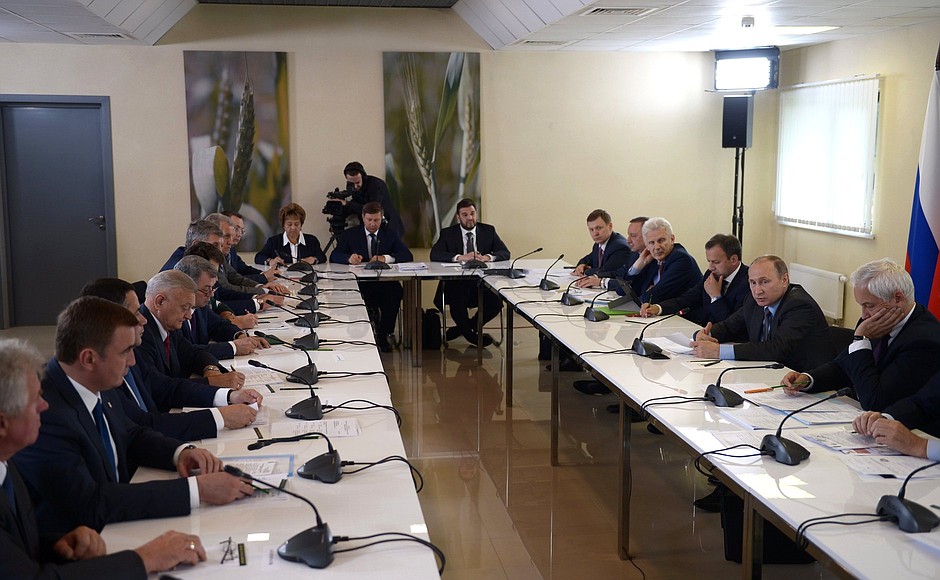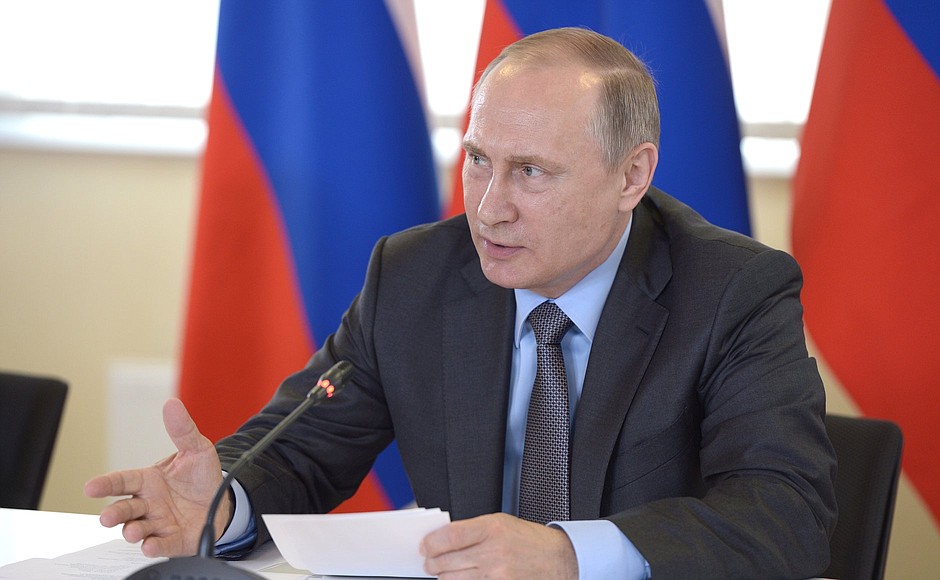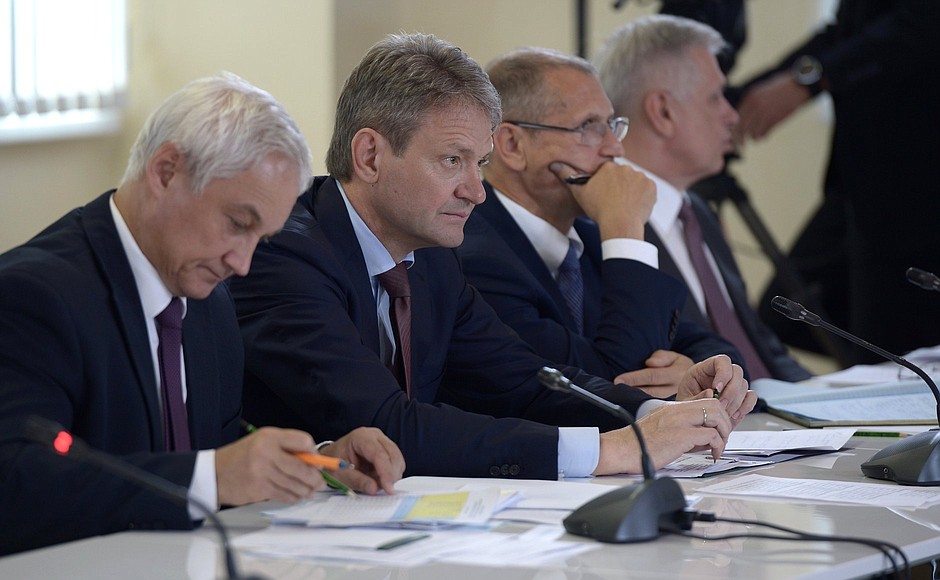Before the start of the meeting, the President visited the production facilities at the Dmitrogorsky meat processing plant.
* * *
President of Russia Vladimir Putin: Good afternoon, colleagues,
We are here today to discuss development of agriculture in the central non-black earth zone, non-black earth regions of Central Russia.
We have just visited the facilities here. This was an interesting visit that showed us a promising, fast and effectively developing business, which obviously makes us happy. They started work here not so long ago at all, around 10 years ago, but have gone a long way since then. When did you begin?
Response: In 2006.
Vladimir Putin: Over these 10 years, you have developed a good, full-fledged and effectively operating business.
I remind you that of the 18 regions in the Central Federal District 12 are non-black earth regions. They are Tver, Yaroslavl, Vladimir, Bryansk, Kaluga, Ryazan, Tula, Ivanovo, Kostroma, Moscow, Orel and Smolensk regions.
Agricultural conditions in the central non-black earth regions are certainly not as good as in the Krasnodar Territory or the Don River region, for example, but these regions have considerable potential nonetheless.
As I was discussing just before with the Acting Governor, these regions’ competitive advantages include proximity to big sales markets and traditionally good conditions for developing livestock and processing of agricultural produce.
We must put these advantages to work of course and improve the efficiency of those sectors that are guaranteed to produce returns. Some regions are already engaged in this effort and have programmes making agriculture a priority. They have taken support measures for the sector and are bringing in investors, which is particularly important for carrying out large-scale projects. Large meat, dairy and greenhouse facilities have already been built in the Bryansk, Kaluga, Orel, Smolensk and Tver regions, for example.
We need to take these kinds of positive examples as models. We are meeting today at one of these production centres. While visiting the facilities, we noted that it would have been hard to find such a place a decade ago, not just here but anywhere in Russia. We had hardly any such places back then.
I am sure that there is much potential yet for developing the sector and making it more effective and for opening production facilities in other non-black earth regions in central Russia too. Let me note that the state authorities continue to give you the needed support. This year alone, we have earmarked 23 billion rubles for agriculture development measures in the central non-black earth regions. This is three billion more than in 2015, when the figure was around 20 billion − 19.8 billion.
I remind you that this money is allocated through the state programme for developing agriculture, which has total funding of 224 billion rubles. We must use these resources effectively, including by improving the system for subsidising agricultural producers. We need to make this system clearer and more transparent, get the money to concrete recipients in timely fashion and exercise tight control over how the money is spent, of course. We need to ensure that the money does not go on projects that cannot produce results.
I want to discuss with you today the steps we must take for this. Let me note several key issues.
First, as far as plant crops go, we need to make the sector more effective by introducing modern technology, carrying out active irrigation measures that will improve crop yields, and start cultivating land that is currently not being used for its primary agricultural purpose. I remind you that I raised this issue in my [Annual Presidential] Address in 2015.
In this, as in other sectors, we need to attract investors, private investors above all, and establish good, constructive ties with financial institutions. The needed legal conditions have already been drafted as concerns buying and selling agricultural land. I ask the regional authorities to be mindful of the agricultural producers’ needs and not create excessive difficulties with drawing up the required documents in this area.
Let me remind you that in Russia as a whole, there are more than 12 million hectares of agricultural land that are not being used for agricultural purposes. Here in the Tver Region alone, there are 2.8 million hectares of unused fields that could be used for agriculture but are currently not being cultivated.
In this respect, let me repeat again, regarding the legal aspect of this issue, that the legislators took a decision on land withdrawal. On July 3 this year, amendments were passed that make it possible to seize land if it is not put to its proper use over a three-year period. The new owner must start cultivating the land within the first year after acquiring the land.
What is very important here is that the authorities should not create artificial difficulties for the new owner in these cases. It is unacceptable if the new owner, who has a year to get the land working, spends his time running from one office to another doing paperwork. On the contrary, all these procedures should be fast, efficient and of high quality. And the financial institutions will need to get involved too to ensure the necessary financing.
Furthermore, when cultivating new land, it is particularly important to focus on the crops best suited to the climate in the non-black earth regions. As you know, these crops include potatoes, flax, and crops used for feed and oils.
Second, we must develop deep processing activity, and not just build new processing facilities for agricultural products but ensure they have the orders they need to operate effectively. Currently, facilities for processing seeds into oil have capacity but are standing idle because of shortages in raw materials. Our production capacity can produce up to 20 million tonnes of raw materials, but Russia is producing only 14 million tonnes. Vegetable oils, as well as grain, are valuable export goods. Russia has been the world leader for wheat exports over this agricultural year. This is an excellent result for our producers: they exported 24.6 million tonnes compared to 21 million tonnes in 2014–2015.
I think that our plant oil producers also have good prospects for strengthening their positions on export markets, as I just said.
Third, developing greenhouse vegetable production is also a big priority. This is not a new task, but development in this sector has been very slow. Gross vegetable crop yields increased by 6 percent in the non-black earth central regions in 2015, but production of greenhouse vegetables fell by 13.7 percent.
Last year, I gave the instruction to develop and introduce mechanisms that would make it possible to reduce or compensate electricity costs for greenhouse vegetable production. I would like to hear today about what is being done here.
Now, on livestock, with the help of substantial state support, development of pig and poultry farming has been rapid over the last decade. I was pleased to hear from a boss of the farm we visited today that the decisions we made and the agricultural development production programme we adopted in 2005 made it possible for new agricultural businesses to take their first steps and reach the point where they are at today. It is sufficient to say that our ability to cover domestic pork and poultry demand has increased from 60 to 95 percent, which is a very good result.
In 2015, for the first time in many years, we reached and even surpassed the food security threshold set for meat in our food security doctrine. The share of domestically produced meat has reached 88 percent of all meat on the market, and the food security doctrine set an objective of 85 percent.
Unfortunately, we do not have such a positive dynamic in cattle farming for meat and dairy products, and I’m referring to beef cattle in the first place. I believe that these sectors should become key areas for the central non-black earth regions’ development. I would like to repeat that these regions have the resources for this: extensive land and the resources needed for ensuring livestock feed.
In this respect, I ask you to develop mechanisms for making livestock and dairy cattle breeding in the central non-black earth regions more effective and attracting farmers to this sector. In particular, I propose examining possibilities for increasing the size of grant support from 1.5 million rubles to 3 million rubles for farmers starting out in dairy farming and livestock and from 21 million rubles to 30 million rubles for family-run livestock farms.
Let’s discuss all of this in more detail now.
<…>
